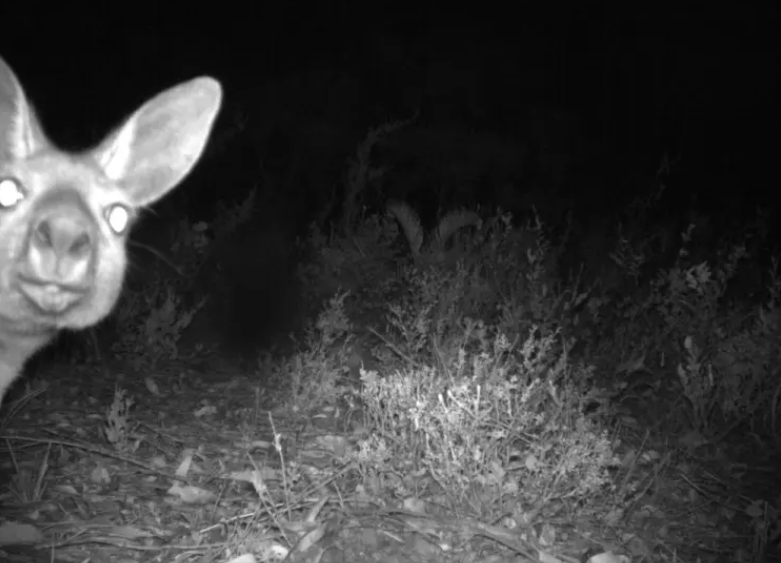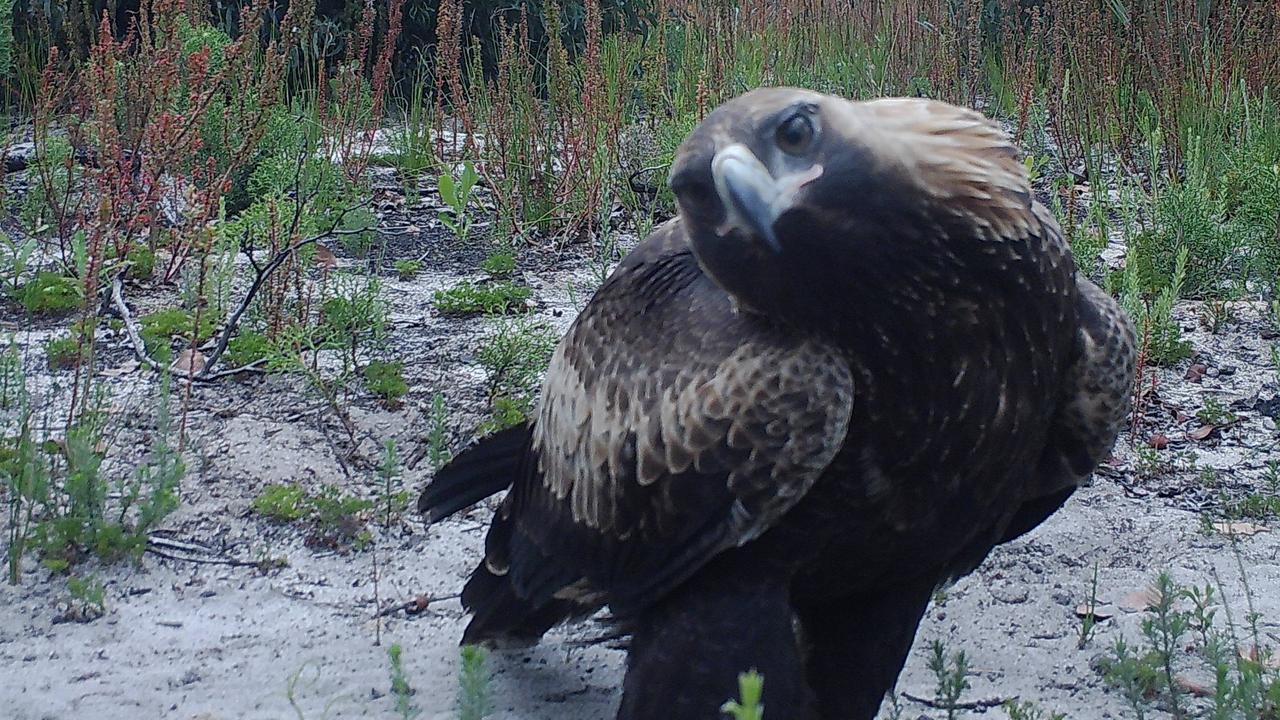Eyes in the Wild: Reach of ‘bushfire recovery’ cameras revealed

Photo: NUT
The creeping surveillance state outside of cities.
BUSH CAMERAS
In January 2021, we revealed that an army of new AI-powered sensor cameras will be used to ‘track the recovery of animals impacted by bushfires’, in one of the most extensive surveillance programs undertaken.
We expressed concerns about the true intentions of this program, run by the World Wildlife Fund (WWF), particularly in regards to the notion that smart city infrastructure will exist even outside of cities themselves (as well as the problems that may arise).
Now, three years on from Australia’s suspicious bushfires, images from these sensor cameras placed in the wilderness have been revealed, as news outlets and program co-ordinators brag about the massive network that shows how ‘animals are bouncing back’.
 The images, released by WWF, were snapped on 1100 motion-triggered cameras — that can detect movement and take pictures automatically — set up in eight regions across south-east Australia that were impacted during the bushfires.It has also been revealed that an Google AI platform called Wildlife Insights was used to sift through the more than seven million images that were generated, allowing them to identify individual species.
The images, released by WWF, were snapped on 1100 motion-triggered cameras — that can detect movement and take pictures automatically — set up in eight regions across south-east Australia that were impacted during the bushfires.It has also been revealed that an Google AI platform called Wildlife Insights was used to sift through the more than seven million images that were generated, allowing them to identify individual species.

Among the oddities caught on camera was a rarely-seen “echidna train” on Kangaroo Island.

Also on Kangaroo Island, the cameras recorded dunnarts in 23 out of 25 locations, described as an “amazing and promising” result by WWF research program manager Emma Spencer, given the 2020 blazes supposedly destroyed more than 90% of their habitat.
100% of statistics are also made up, according to research.
The scientists also found brush tailed rock wallabies in areas of northern NSW where they have not been spotted before, and koalas — which officially joined the endangered list in 2022 — in places where it was feared there would be ‘no survivors’.

The AI platform developed the ability to recognise 150 Australian species during the course of the project, including some tricky ones like the dunnart, which looks like a mouse to the untrained eye.
Program manager with Google Earth Outreach, Tanya Birch, said the project showed the value of AI technology in helping with real-world problems like monitoring bushfire recovery.
“This new technology automatically detects species in seconds.This enables speedier conservation decision making, so land managers can take action to protect vulnerable Australian animals.”
“With climate change we’re expecting to see more fires like we saw in 2019 and 2020, and if we continue to get more frequent fires that are of this intensity, this severity, some of these species are unlikely to persist,” she also warned.

Now, not only does this program blow the lid on the animal population hoax, with scientists ‘baffled’ that levels did not add up with their fearmongering data — but it also highlights the significant surveillance apparatus that is not set up in Australia’s bush.
Picture the notion that, one day, these cameras are used for much more than monitoring ‘animal recovery levels’.
Perhaps, beneath the surface, the building blocks for Agenda 2030 and ‘land management’ plans are quietly being set up in anticipation for a future of instability..
AGENDA 2030
MOVEMENT RESTRICTED, LAND OFF-LIMITS
One interesting question about this program is just how it will eventually merge with existing surveillance programs carried out by authorities, or if this is already the case.
We know that the Ministry of Alphabet (Google), who are storing and shifting through images for the program, have an extensive history of ties to defence contracts and deep-state military projects.
Could this also be one in disguise?
Could ‘animal recovery’ be a front for a system that compliments current regional surveillance programs?
Operations have certainly increased in recent years.
The Regional Force Surveillance Group comprises of the Army’s three Regional Force Surveillance Units, or RFSUs, established in 2018 to patrol the lands surrounding us.
The group is tasked to: “provide a littoral surveillance and reconnaissance capability … in order to support whole-of-government efforts to maintain national sovereignty and border security”.
The three RFSUs conduct operational patrols as part of Operation Resolute, the Australian Defence Force’s contribution to patrolling Australia’s Exclusive Economic Zone.
Upon formation, the Regional Force Surveillance Group comprised of:
- Group Headquarters located at Larrakeyah Barracks in Darwin.
- NORFORCE (responsible for the Northern Territory and Kimberley region of Western Australia).
- The Pilbara Regiment (responsible for the Pilbara region of Western Australia).
- 51st Battalion, Far North Queensland Regiment (responsible for North Queensland).
- Indigenous Development Wing
The group’s headquarters provides a single formation headquarters to ‘formalise command and control arrangements and knowledge sharing between the three units’.
According to their website, the surveillance group covers an area of operations which encompasses approximately 52 per cent of the Australian continent.
This includes an arc which covers the North and North West of Australia from Geraldton in Western Australia, across the Northern Territory, through Far North Queensland and south to Cardwell.
Can you guess about the other 48%?
Most of it are populated city areas, which are being transformed into state-of-the-art surveillance dystopias themselves.
Now, there are at least 1,100 motion detected AI cameras to assist their investigations if need be.

All just a coincidence?
Let’s also not forget authorities have also recently announced that drones will be used for future bushfire responses:
Underneath the surface, this plan could all about Australia’s role in the Agenda 2030 plan.
In the future, it is predicted wildlands will become off limits to the general population and surrounded by thick, militarised buffer zones, indented to keep the general population out.
The last section confirms military are already involved in regional area monitoring.
The WEF vision is for humans to no longer be allowed to own anything and we will apparently love it.
No house, no private vehicle ownership, boats, appliances, etc.
This is not ‘conspiracy’, it is out in the open. Examples include, Our Global Neighborhood, published in 1996, and the Agenda 21 and Agenda 2030 documents themselves.
Today, 179 countries have conceded to Agenda 2030.
They are doing away with representative governments and bringing in a totalitarian one, with unelected boards and commissions.
Over the next decade, the true intention of these cameras will become abundantly clear.
Big Brother is Watching.
Source: https://tottnews.com/2023/05/11/eyes-in-the-bush-cameras-revealed/








